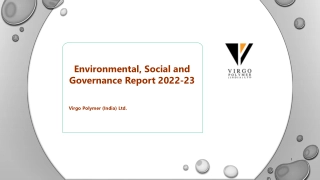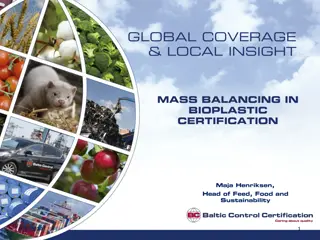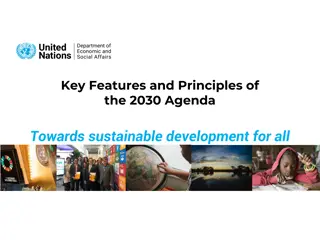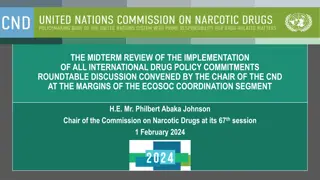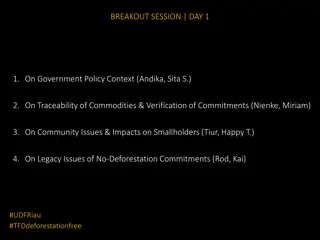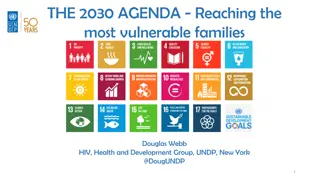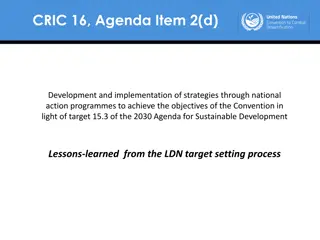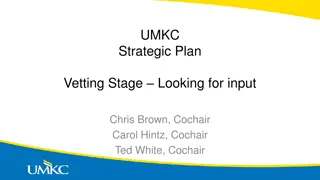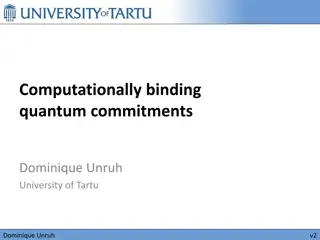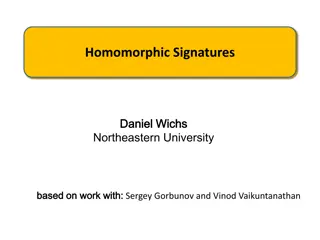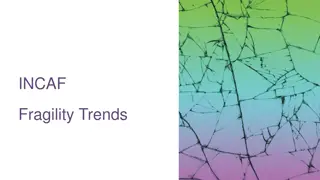Modeling Sustainability and Global Commitments for 2030 Development Agenda
This content highlights international commitments such as the Sendai Framework for Disaster Risk Reduction, Addis Ababa Action Agenda, 2030 Agenda for Sustainable Development, and the Paris Agreement. It emphasizes the challenges of decision-making in complex environments, the importance of global models for policy reference, and the necessity of measuring impacts for trade-offs. The discussion extends to modeling sustainability from a global to national level, focusing on energy systems, sustainable development policies, and insights from national policies on poverty eradication, inequality reduction, and environmental protection.
Download Presentation

Please find below an Image/Link to download the presentation.
The content on the website is provided AS IS for your information and personal use only. It may not be sold, licensed, or shared on other websites without obtaining consent from the author.If you encounter any issues during the download, it is possible that the publisher has removed the file from their server.
You are allowed to download the files provided on this website for personal or commercial use, subject to the condition that they are used lawfully. All files are the property of their respective owners.
The content on the website is provided AS IS for your information and personal use only. It may not be sold, licensed, or shared on other websites without obtaining consent from the author.
E N D
Presentation Transcript
International commitments June 2015: Sendai Framework for Disaster Risk Reduction 2015-2030 July 2015: Third International Conference on Financing for Development adopted the Addis Ababa Action Agenda September 2015: Transforming our world: the 2030 Agenda for Sustainable Development December 2015: Paris Agreement
The 2030 Agenda, the SDGs and science
The challenges of the 2030 Agenda
Heightened complexity The challenge: How to decide when linkages point in different directions Need a way of measuring impacts to be able to compensate for trade-offs and complement with additional policy options Global models Give a sense of global consistency Provide a reference for national policies But cannot directly guide national policies
Modelling for sustainability: from global to national Energy systems models CGE global trade models GLOBAL CGE or economy- wide Global physical feasibility sustainability investments Global damage cost well-being GLOBAL IAM CLIMATE MODELS: EMISSIONS AND CLIMATE National sustainable development Policies Geospatial electrification National energy systems models Integrated assessments; climate, land, energy, water systems (CLEWS) National CGE or economy- wide models Microsimulation
Global models insights A sample Rapid growth in developing countries and poverty eradication are both consistent with sustainability. Energy for all is compatible with sustainable paths, with only marginal increase in emissions. Tapping biofuels might reduce emissions but decrease biodiversity. Preventing climate change, enhancing biodiversity and controlling air pollution are all achievable goals. Nuclear energy can contribute but is not a must for arriving at a sustainable development path. National policies A sample Poverty eradication Reduced inequality Higher living standards Food security Protecting the environment Universal access to electricity Renewable and clean energy Affordable and reliable energy Industrialization Curbing emissions under nationally determined contributions Energy security Providing context
Sustainable development The food-energy-water nexus National development policies Food Food, energy and water systems are highly interlinked Often referred to by the term nexus Part of broader development challenge as reflected in the 2030 Agenda for Sustainable Development National sustaina ble develop ment policies Energy Water
CLEWS An analytical framework and model Energy model Energy for fertilizer production Energy required for field preparation and harvest Biomass for biofuel production and other energy uses Energy for water processing and treatment Greenhouse gas emissions Energy for water pumping Energy for desalination Water available for hydropower Water for power plant cooling Water for (bio-) fuel processing Climate Water model Land-use model Precipitation, temperature Water for biofuel crops (rain-fed and irrigated) Water needs for food, feed and fibre crops (rain-fed and irrigated)
Addressing complexity Modelling tools Approach Sound, adapted and based on NATIONAL development PRIORITIES. Socio- economic impact A suite of models. No single model can cover all relevant issues. Economy- wide Accessible, unrestrained from proprietary specification (open source). Integrated Assessment System Modelling system User-friendly, communication effective. Integrated assessment Energy systems Tapping research and the knowledge-creation communities. Electricity for all Responding to demands for CAPACITY-BUILDING.
BUILDING ANALYTICAL CAPACITY FOR SUSTAINABLE DEVELOPMENT POLICIES 2005-2015 20 countries 2015-2017 Bolivia Costa Rica Ghana Kyrgyzstan Mongolia Nicaragua Paraguay Uganda
PROJECT SCHEDULE OF ACTIVITIES: CLEWS WORKSHOP I 40 hrs./each WORKSHOP 4 10 hours WORKSHOP 2 40 hrs./each WORKSHOP 3 40 hrs./each D A T A S C O P I N G P U B L I C A T I O N S W O R K W O R K W O R K - Insights from modeling INTEGRATED MODELLING CLEWS WATER MODELLING ENERGY MODELLING A T A T G A T H E R I N G A T - Informing policy debate Data use Scenarios Interpreting Data use Scenarios Interpreting Data use Scenarios Interpreting D I S T A N C E D I S T A N C E D I S T A N C E - Outreach, disseminate ITERACTIVE MODEL BUILDING 1st year 2ndyear
BUILDING INSTITUTIONS TO INFORM SUSTAINABLE DEVELOPMENT POLICIES MODELS MODELS ECONOMY- WIDE ENERGY INTEGRATED ASSESSMENT MICRO- SIMULATION SECTOR MODELS SECTOR MODELS AWARENESS OF MODELLING MECHANICS, POWER AND LIMITATIONS


